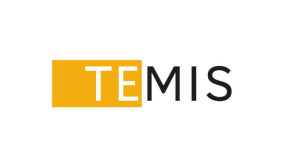Smart Screen Exclusive

TEMIS: Helping Make Content Smarter
Story Highlights
By Chris Tribbey
Since day one, Paris-based TEMIS has had a vision: enable organizations to better exploit their unstructured content, with the goal of helping them manage their business more efficiently.
TEMIS’s flagship platform, Luxid, helps automate the extraction of relationships, categories and topics appearing in content, augmenting content metadata for media companies who are working in an increasingly digital world, where semantic content enrichment is a must.
Daniel Mayer, VP of product and marketing for TEMIS, sat down with the Media & Entertainment Services Alliance (MESA), to discuss the benefits of Luxid, the companies that use it, the partners that help make TEMIS successful, and what’s next for TEMIS.
MESA: What was the impetus for TEMIS when it launched in 2000, what gap in the market was the company looking to fill?
Mayer: The original gap was related to search. Across sectors, our first customers were frustrated with the lack of relevance of the search results they were getting with mainstream search engines. And some of them were already looking to improve the way they managed knowledge and harvested insights from news and corporate content. We didn’t know it at the time, but we were seeing the first stages of the Big Data and Cognitive Computing markets.
MESA: Can you share some use cases in the media and publishing sector, where companies made especially good use of TEMIS’s offerings?
Mayer: Absolutely. Our customers are typically seeking to more effectively engage their audience, make their content easier to monetize, create new types of differentiated products or make their workflows more efficient.
The way we help them is by enriching their assets with semantic metadata that describes what they are about. In news that might mean identifying key topics (politics, business, health), people, companies or locations mentioned, and so on. In sports it might mean identifying sports teams and key players, events, and scores. In entertainment it might be titles, celebrity and directors or names of characters.
This metadata can then be used to:
• Improve audience experience by recommending relevant/attractive content based on past viewing choices, or by making it easier to find.
• Package assets by topic so they can be monetized as such, either directly or through indirect channels.
• Improve ad targeting by linking ads to topically related assets.
Because this metadata is produced computationally (by our Luxid application), the process is fast and scalable, enabling our customers to process archives in a matter of days if they need to. The metadata also creates downstream workflow efficiencies because once assets are enriched in a consistent manner; packaging and routing decisions can be essentially automated, saving time and effort.
MESA: Luxid — your flagship platform — is used by a wide swath of companies. What makes it stand out in the world of enriching content with domain-specific metadata, and helping companies package and deliver information to audiences?
Mayer: Indeed. We serve Thomson Reuters, Bloomberg, Gannett, CBC, Agence France-Presse, and numerous other accounts in Media, Publishing and beyond. All of them share a common thread that content is their lifeblood, and want to optimize how it is channeled to the audience.
Our magic sauce is the specific balance that we have been striving to achieve in the platform: powerful yet simple. Powerful, because the platform lends itself to enterprise-wide deployments, on large data sets and across use cases thanks to the large range of extraction techniques it offers, the 20 languages it supports out of the box, and our market-leading suite of developer tools. Simple, thanks to an integrated workflow where mainstream end-users can immediately preview how well the platform performs on their content, and quickly adjust the extraction workflow without being a natural language processing guru. The combination offers robust and scalable functionality that is both manageable for the larger proportion of end-users, yet offers an unlimited growth path for power users, as well as a low total cost of ownership to the entire organization.
MESA: From platform and service partners to independent software vendors, TEMIS has a pretty wide-ranging partner program. How essential is it nowadays to have partners like these, and can you single out a few that have been especially beneficial?
Mayer: Partnering has been key in our development. No technology is an island. It is always deployed in a larger technology ecosystem, and as part of bespoke workflows. We’ll customarily integrate with customers’ content repositories – such as MarkLogic or SharePoint — or editorial tools — such as Newscycle/ATEX. By working closely with the software vendors, consulting groups and system integrators who make up this ecosystem, we’re all better placed to serve customers.
MESA: What’s next for TEMIS, what services would the company like to provide, and what businesses would the company like to partner with next?
Mayer: As we move further into the sector, we expect to expand in areas such as recommendation services and analytics, which are becoming more and more popular. We also see opportunities for audience feedback analytics, where we analyze social media posts to find how audiences react to programs, helping broadcasters better match audience expectations. This is an approach we’ve deployed successfully in other sectors and we expect it to transpose well to media and entertainment. On the partnership front we’re looking to work more closely with DAM and production system vendors as well as the advertising value chain.
Parties interested in knowing more about TEMIS’s semantic enrichment platform, its benefits and how it integrates into digital asset management platforms and production workflows can contact Ian Cameron, TEMIS’s VP for digital media, at [email protected].









